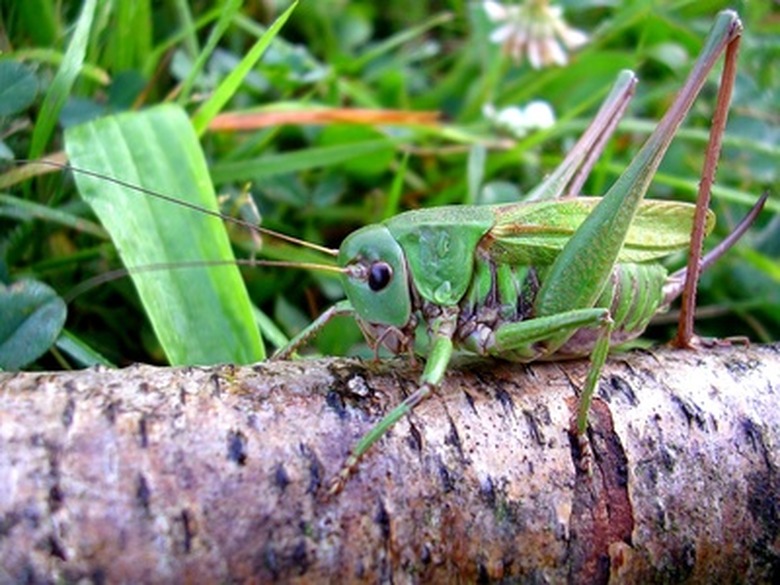What Are The Characteristics Of Grasshoppers?
There are many different types of grasshoppers that vary in size and color. But grasshoppers also share some characteristics, no matter the species. These insects are commonly found all over the United States. Because grasshoppers are generally harmless, they have long been a favorite insect for children, who like to catch them and keep them in jars to observe.
Appearance
Appearance
Grasshoppers usually are a shade of brown, green or black. They have large hind legs that help them jump long distances, hence their name. Adult grasshoppers also have two sets of wings, with the forewings being slender and the hindwings large. These insects also have large eyes in relation to their head and short antennae.
Food
Food
Grasshoppers mostly eat plants. Some species live on a host plant and eat its leaves, flowers, stems and seeds. Other grasshopper species eat what they find on the ground, such as pieces of leaves and flowers, seeds or dead insects. But grasshoppers can be picky about their food. They often sample foods before they begin feeding. Normally, grasshoppers choose items that supply them with the right types of amino acids, sugars and vitamins.
Reproduction
Reproduction
A female grasshopper lays egg pods in the ground after digging a small hole with her abdomen. The size, shape and number of eggs contained in each pod differs depending on the species. Grasshoppers typically lay their eggs in warm weather. If the eggs are laid in cold weather, some can become dormant until the weather is favorable for them to mature. Female grasshoppers lay an average of 200 eggs during their lifetimes.
Impact
Impact
Grasshoppers have varying impacts on the environment. Their droppings enrich the soil by returning organic matter to the earth. Grasshoppers also provide a food source for many other animals, including larger insects, birds and some small mammals. However, grasshoppers also can have a negative impact on their surroundings if populations become large and destroy valuable crops and other plants.
Cite This Article
MLA
, Megan Smith. "What Are The Characteristics Of Grasshoppers?" sciencing.com, https://www.sciencing.com/characteristics-grasshoppers-6765353/. 22 November 2019.
APA
, Megan Smith. (2019, November 22). What Are The Characteristics Of Grasshoppers?. sciencing.com. Retrieved from https://www.sciencing.com/characteristics-grasshoppers-6765353/
Chicago
, Megan Smith. What Are The Characteristics Of Grasshoppers? last modified March 24, 2022. https://www.sciencing.com/characteristics-grasshoppers-6765353/
